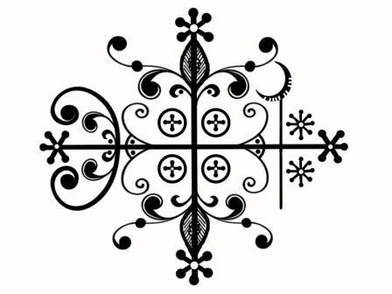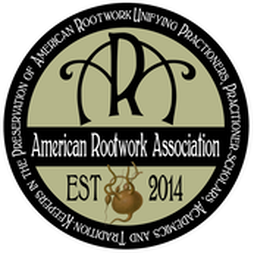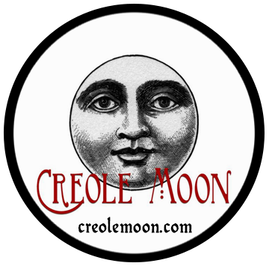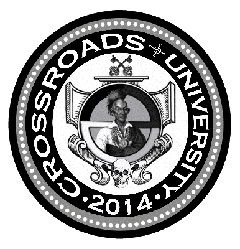NEW ORLEANS VODOU
Busting Myths about New Orleans Voudou
Denise M. Alvarado
 Papa Legba veve design by Denise Alvarado.
Papa Legba veve design by Denise Alvarado.
New Orleans Voudou continues to be a largely misunderstood religion. The recent reinforcement of untruths and misconceptions, along with an unhealthy dose of mudslinging upon clergy coming from popular pseudo scholars has played a role in pushing the public perception back about 10 years or more.
I originally wrote this article for the New Orleans Voodoo Examiner in 2011. I find that the myths busted in the article continue to hold true and are worth repeating. It is for this reason I have republished the article on this site. I remain frustrated with the sheer amount of ignorance displayed by the general public as well as from actual practitioners of related ATRs (African Traditional Religions), but this is to be expected when religions become trendy and based on internet searches, easily bought and paid for initiations and psuedo scholar narratives of European American origin.
Again, I present to you a list of some common myths about New Orleans Voudou and debunk them. This should give those who are truly interested in learning about New Orleans Voudou some great information, as well as give naysayers and pseudo scholars more food for insipid gossip.
I originally wrote this article for the New Orleans Voodoo Examiner in 2011. I find that the myths busted in the article continue to hold true and are worth repeating. It is for this reason I have republished the article on this site. I remain frustrated with the sheer amount of ignorance displayed by the general public as well as from actual practitioners of related ATRs (African Traditional Religions), but this is to be expected when religions become trendy and based on internet searches, easily bought and paid for initiations and psuedo scholar narratives of European American origin.
Again, I present to you a list of some common myths about New Orleans Voudou and debunk them. This should give those who are truly interested in learning about New Orleans Voudou some great information, as well as give naysayers and pseudo scholars more food for insipid gossip.
NEW ORLEANS VOODOO MYTH #1
"Originally, the spirits in the New Orleans Voodoo pantheon were called by their African names, but once French Creole replaced native African languages, their original names were no longer used."
NEW ORLEANS VOODOO FACT #1
Originally, the spirits in the New Orleans Voodoo pantheon were called by their African names, AND THEY STILL ARE. Granted, some spirits also have Creole names but their original names are still with them. For example, Legba is still Legba, though he is also called Papa Labas. Ogun is sometimes called Joe Feray. But for the most part, MOST of the spirits have their original names: Oya is still Oya, Shango is still Shango, Mami Wata is still Mami Wata, Oshun is still Oshun.
NEW ORLEANS VOODOO MYTH #2
"The spirits then adopted the names of Catholic Saints. Each spirit was paired with a Saint in charge of similar spheres of life. The adoption of Catholic practices to the voodoo faith soon became an integral part of what is known today as New Orleans voodoo."
NEW ORLEANS VOODOO FACT #2
While not a myth, it is a very simplified version of how Catholicism came to be associated with New Orleans Voodoo. The true story is not a pretty picture and needs to be stated. Voodoo became syncretized with the Catholic religion as a result of the massive forced migrations, displacements of the slave trade, and the Code Noir (Louisiana’s Black Code). Slave owners forbade the Africans from practicing Voodoo under penalty of death and as a result of the Code Noir, Africans were forced into Catholicism. It was African ingenuity that resulted in the incorporation of saints into the New Orleans Voodoo pantheon of spirits served - the similarities between some of the saints and Voodoo spirits (loas) were such that a saint could act as a sort of stand in for public worship of the loa. Since one could be whipped, branded with a fleur de lys and killed for practicing African traditional religions, the saints were used to cloak the African spirits which allowed the African traditions to survive. But let there be no mistake, no one is confused about who they are serving - the saints do not replace the loas and saints and loas are not one and the same.
"Originally, the spirits in the New Orleans Voodoo pantheon were called by their African names, but once French Creole replaced native African languages, their original names were no longer used."
NEW ORLEANS VOODOO FACT #1
Originally, the spirits in the New Orleans Voodoo pantheon were called by their African names, AND THEY STILL ARE. Granted, some spirits also have Creole names but their original names are still with them. For example, Legba is still Legba, though he is also called Papa Labas. Ogun is sometimes called Joe Feray. But for the most part, MOST of the spirits have their original names: Oya is still Oya, Shango is still Shango, Mami Wata is still Mami Wata, Oshun is still Oshun.
NEW ORLEANS VOODOO MYTH #2
"The spirits then adopted the names of Catholic Saints. Each spirit was paired with a Saint in charge of similar spheres of life. The adoption of Catholic practices to the voodoo faith soon became an integral part of what is known today as New Orleans voodoo."
NEW ORLEANS VOODOO FACT #2
While not a myth, it is a very simplified version of how Catholicism came to be associated with New Orleans Voodoo. The true story is not a pretty picture and needs to be stated. Voodoo became syncretized with the Catholic religion as a result of the massive forced migrations, displacements of the slave trade, and the Code Noir (Louisiana’s Black Code). Slave owners forbade the Africans from practicing Voodoo under penalty of death and as a result of the Code Noir, Africans were forced into Catholicism. It was African ingenuity that resulted in the incorporation of saints into the New Orleans Voodoo pantheon of spirits served - the similarities between some of the saints and Voodoo spirits (loas) were such that a saint could act as a sort of stand in for public worship of the loa. Since one could be whipped, branded with a fleur de lys and killed for practicing African traditional religions, the saints were used to cloak the African spirits which allowed the African traditions to survive. But let there be no mistake, no one is confused about who they are serving - the saints do not replace the loas and saints and loas are not one and the same.
NEW ORLEANS VOODOO MYTH #3
"Gris gris and mojo bags are the same thing."
NEW ORLEANS VOODOO FACT #3
Gris gris and mojo bags are NOT the same thing. I’m feeling like a broken record here, but that’s okay. One day, I just know a light bulb will go off in people’s heads and they will realize what I am saying is true. Gris gris is an African traditional spiritual practice that is a form of talismanic magic that is created and employed in a variety of forms. It was brought to New Orleans with the African traditionalists and the Muslim marabouts and has remained a part of the New Orleans Voudou magicospiritual repertoire ever since.
NEW ORLEANS VOODOO MYTH #4
“Voodoo in New Orleans traces its roots to the ancient religions of Africa, but they came through the colonial outpost of Haiti.”
NEW ORLEANS VOODOO FACT #4
This little gem comes from eHow contributor Rhonda Wannamaker in her article The History of Voodoo in New Orleans Louisiana. First, I must ask, what happened to researching a subject before writing about it? New Orleans Voodoo did NOT come from Haiti, it was already in place BEFORE the influx of slaves from San Domingue (Haiti).
Voudou arrived in New Orleans with the first slaves in 1719 – Haiti wasn’t even a nation at the time. The first Africans who set foot in New Orleans were from the Bight of Benin, while two thirds of the entire slave population was from Senegambia. Each of the regions from which the slaves were stolen had their own religious and magickal practices and these traditions were all brought to the shores of Louisiana with the Africans. It wasn’t until after 1803 when the United States purchased the Louisiana territory that there were several influxes of immigrants from Saint Domingue (Haiti). So, while there were people who came from Haiti who brought their form of Vodou practices with them, they supplemented the already in place, largely Yoruban-based Voudou religion of New Orleans.
* This article originally appeared in my column for the New Orleans Voodoo Examiner on December 23, 2011. It has been edited and updated for this site.
"Gris gris and mojo bags are the same thing."
NEW ORLEANS VOODOO FACT #3
Gris gris and mojo bags are NOT the same thing. I’m feeling like a broken record here, but that’s okay. One day, I just know a light bulb will go off in people’s heads and they will realize what I am saying is true. Gris gris is an African traditional spiritual practice that is a form of talismanic magic that is created and employed in a variety of forms. It was brought to New Orleans with the African traditionalists and the Muslim marabouts and has remained a part of the New Orleans Voudou magicospiritual repertoire ever since.
NEW ORLEANS VOODOO MYTH #4
“Voodoo in New Orleans traces its roots to the ancient religions of Africa, but they came through the colonial outpost of Haiti.”
NEW ORLEANS VOODOO FACT #4
This little gem comes from eHow contributor Rhonda Wannamaker in her article The History of Voodoo in New Orleans Louisiana. First, I must ask, what happened to researching a subject before writing about it? New Orleans Voodoo did NOT come from Haiti, it was already in place BEFORE the influx of slaves from San Domingue (Haiti).
Voudou arrived in New Orleans with the first slaves in 1719 – Haiti wasn’t even a nation at the time. The first Africans who set foot in New Orleans were from the Bight of Benin, while two thirds of the entire slave population was from Senegambia. Each of the regions from which the slaves were stolen had their own religious and magickal practices and these traditions were all brought to the shores of Louisiana with the Africans. It wasn’t until after 1803 when the United States purchased the Louisiana territory that there were several influxes of immigrants from Saint Domingue (Haiti). So, while there were people who came from Haiti who brought their form of Vodou practices with them, they supplemented the already in place, largely Yoruban-based Voudou religion of New Orleans.
* This article originally appeared in my column for the New Orleans Voodoo Examiner on December 23, 2011. It has been edited and updated for this site.



